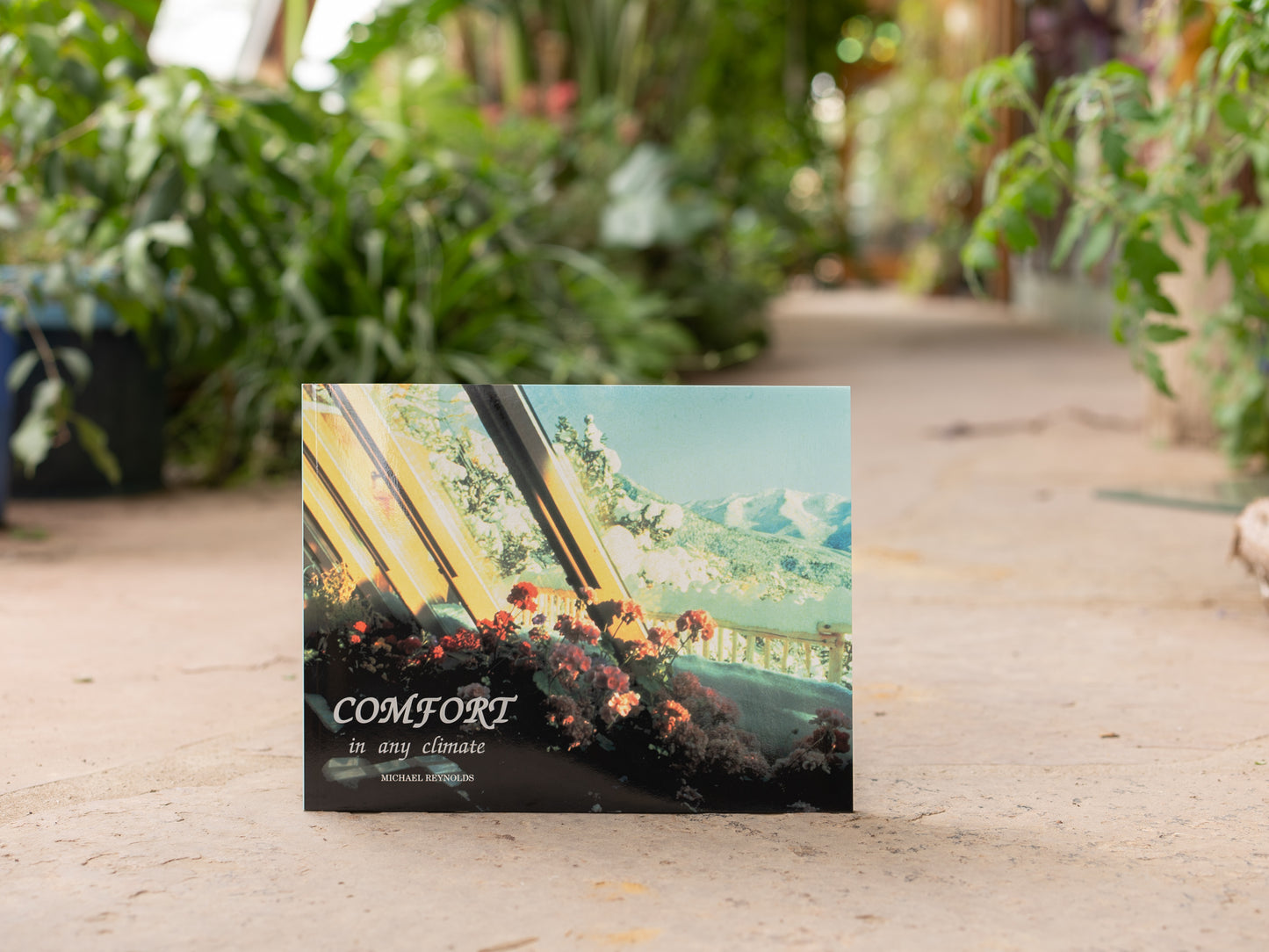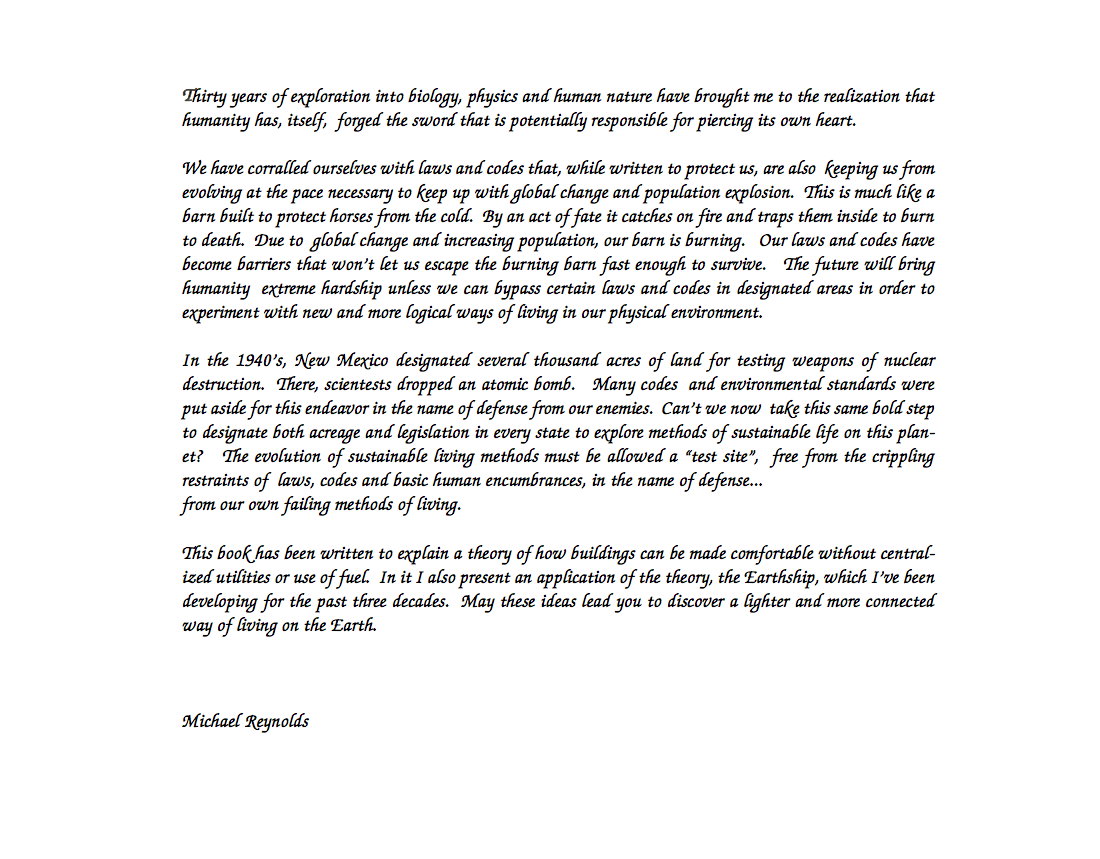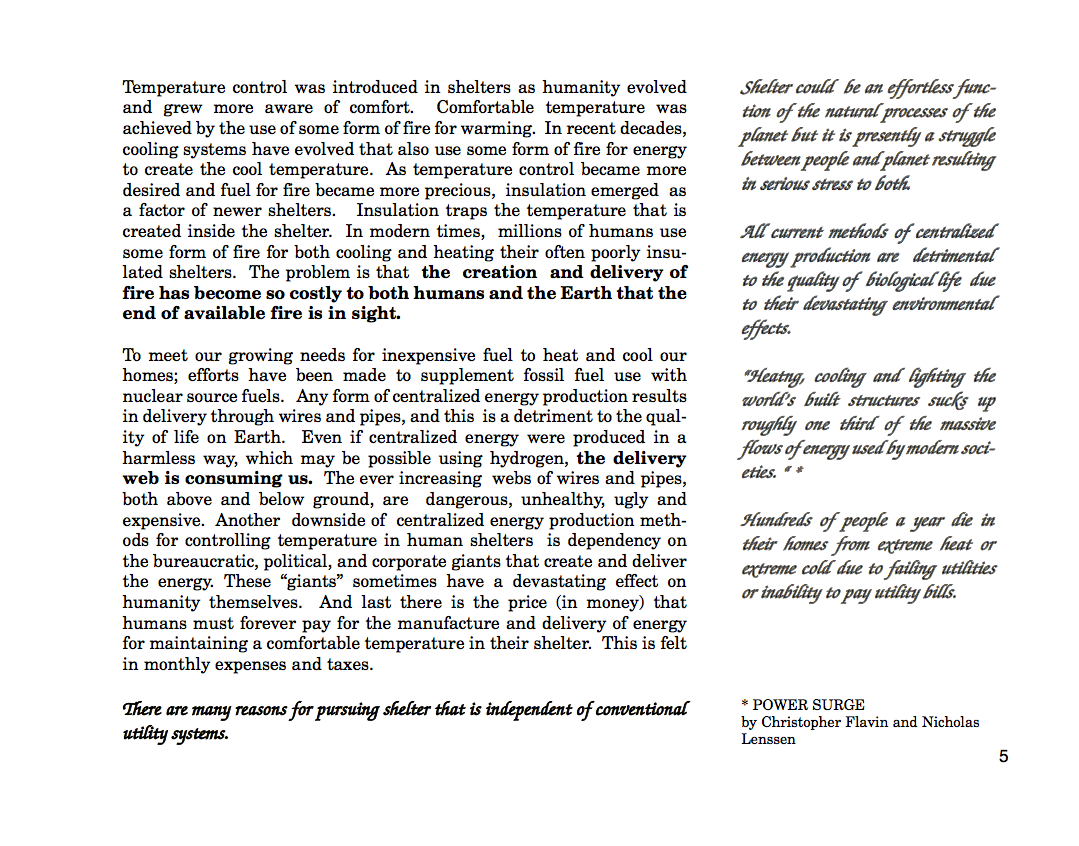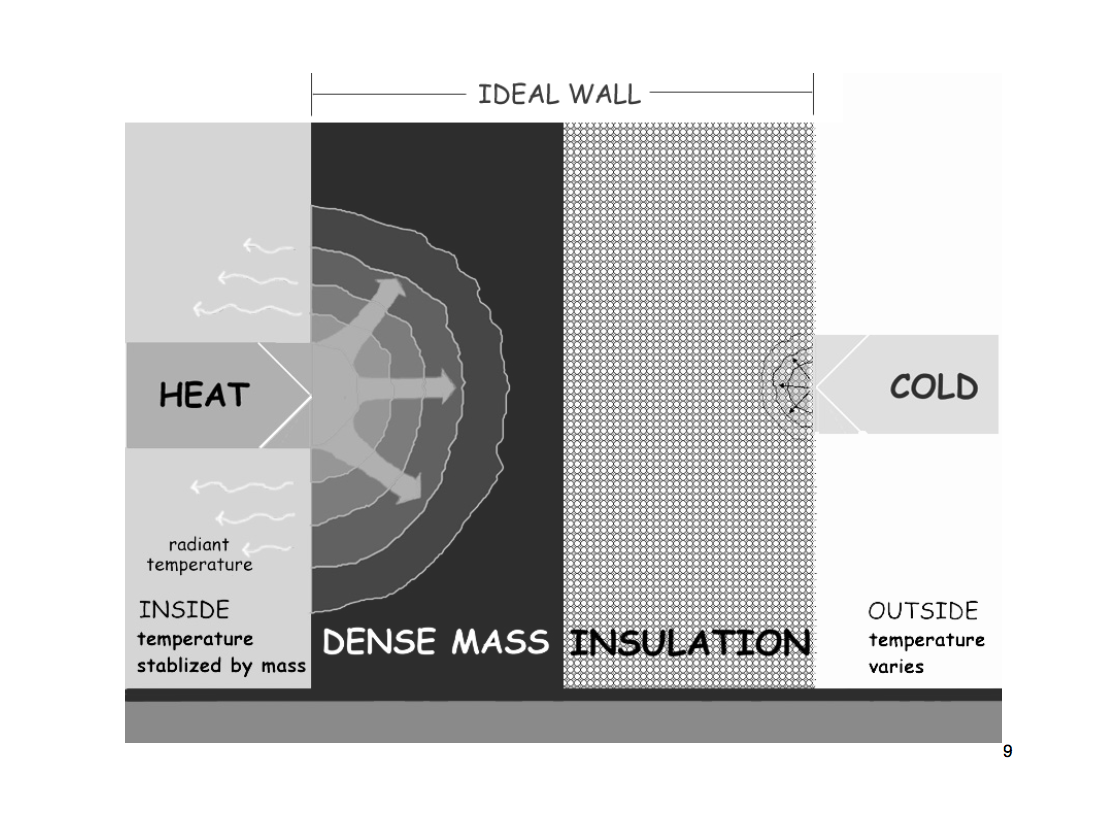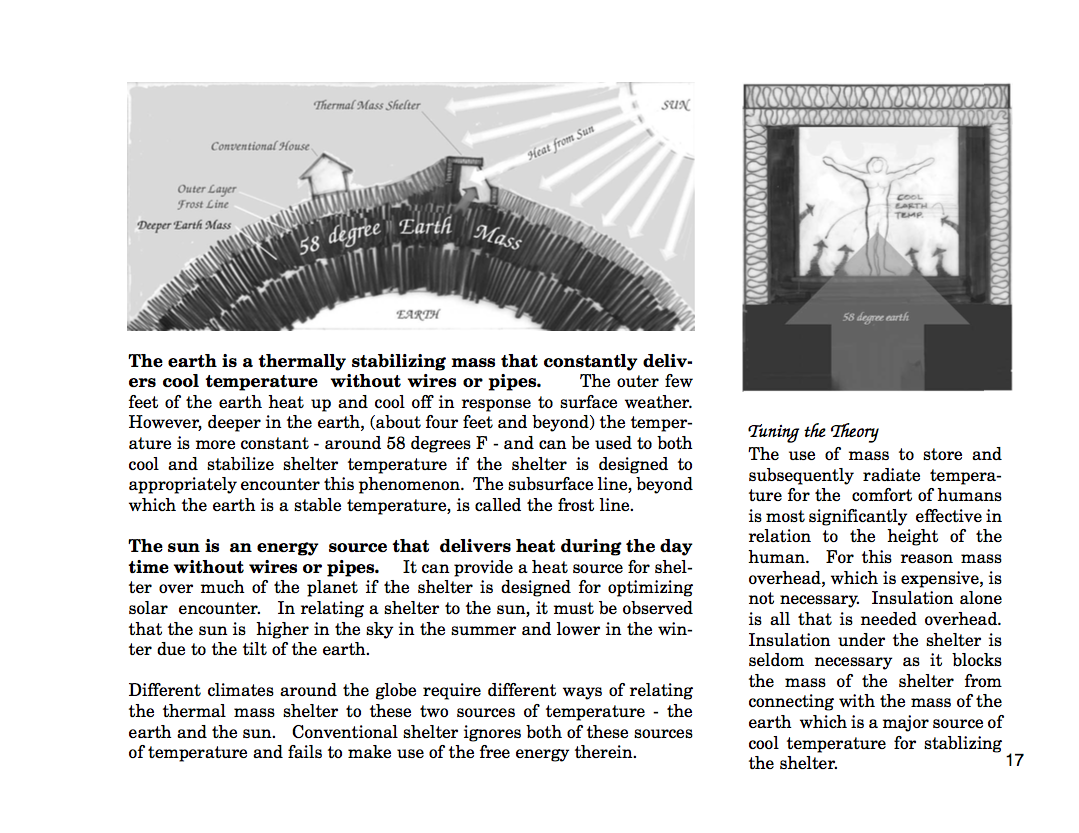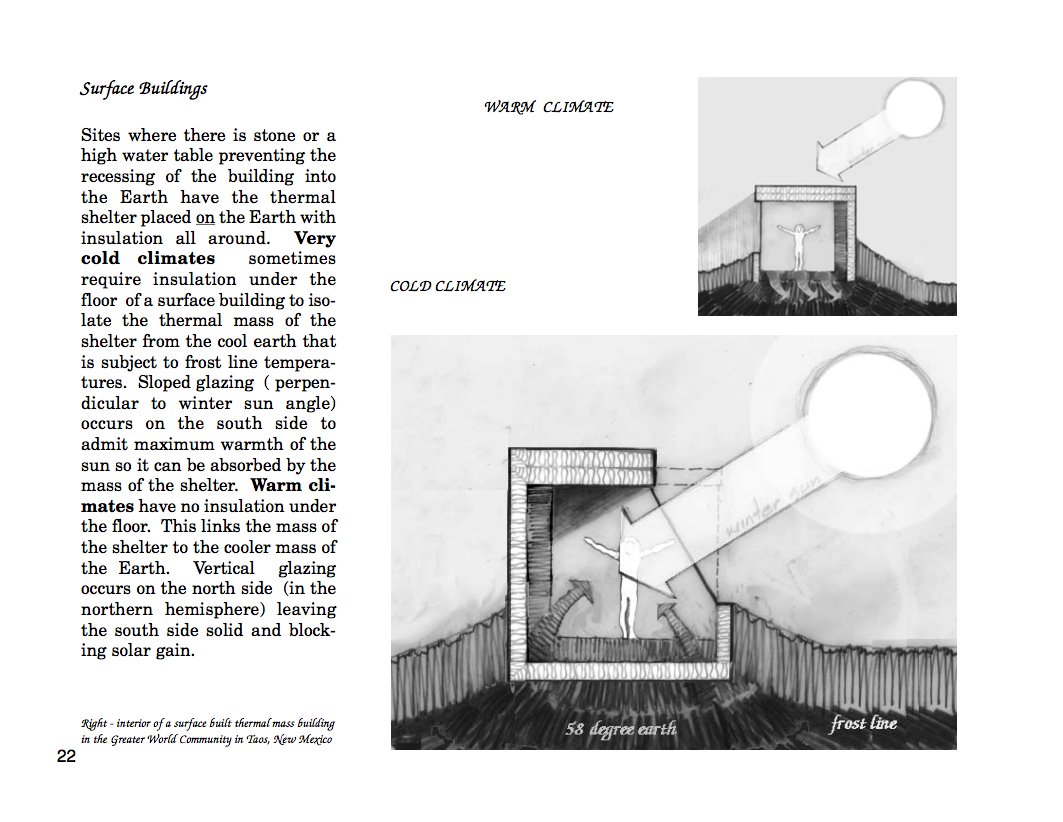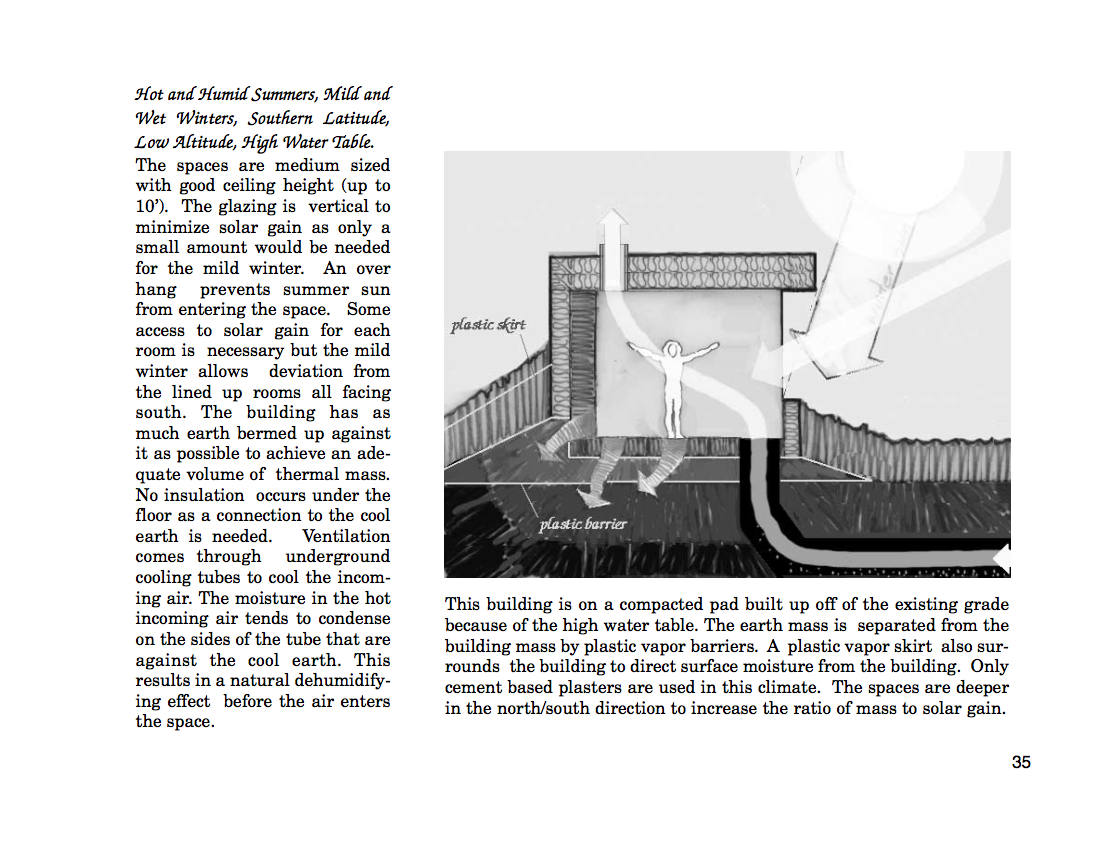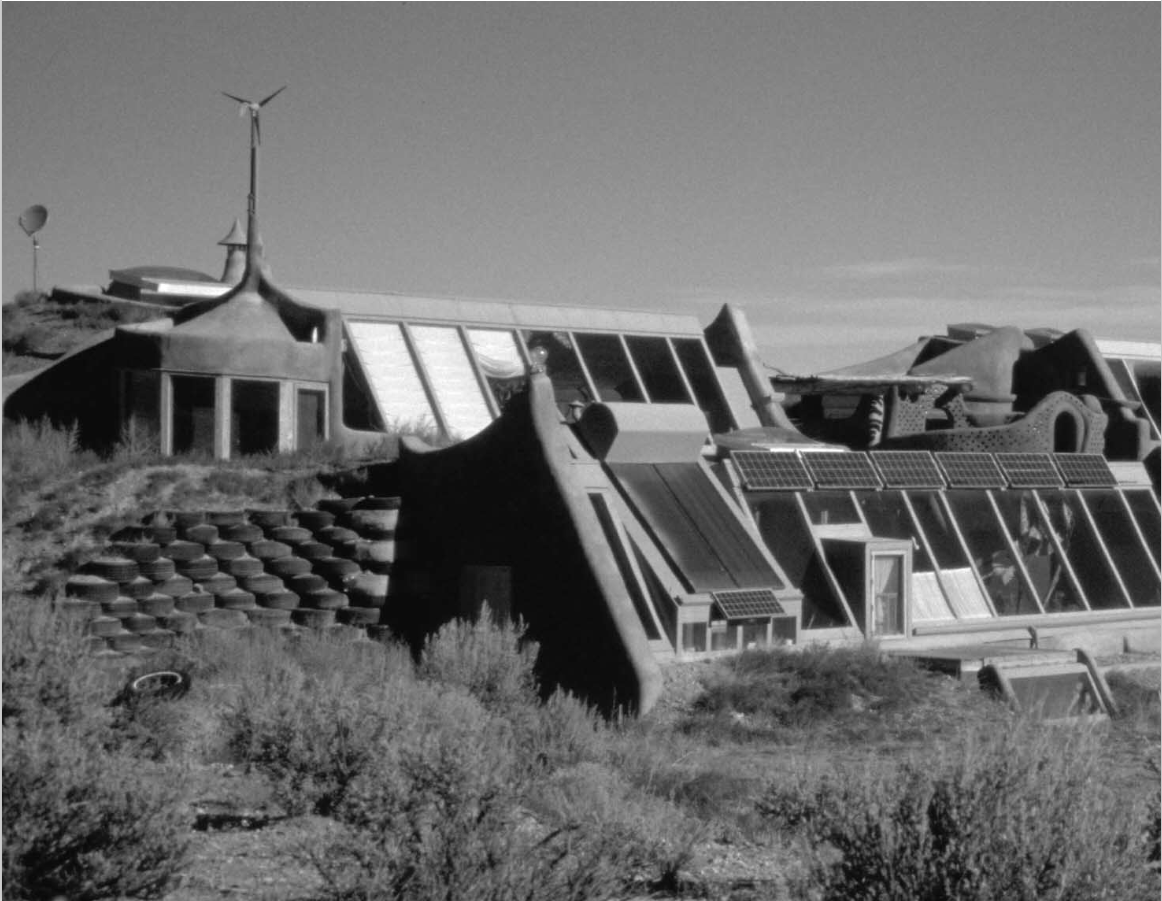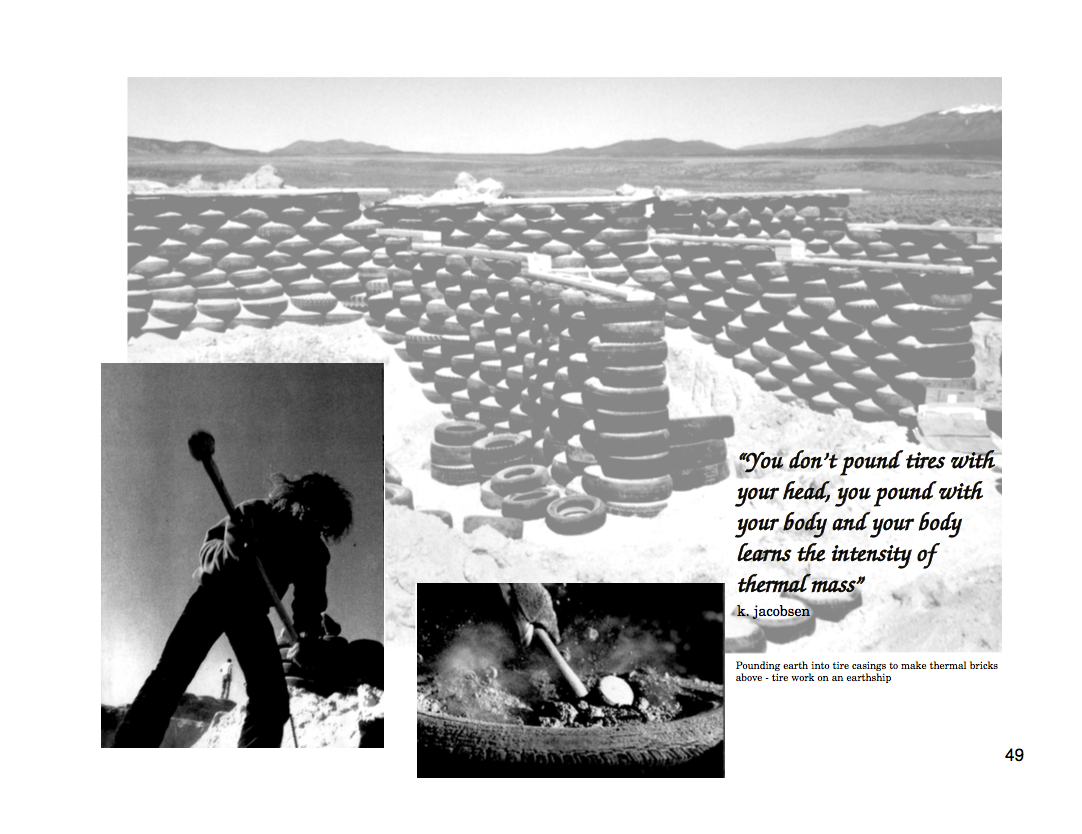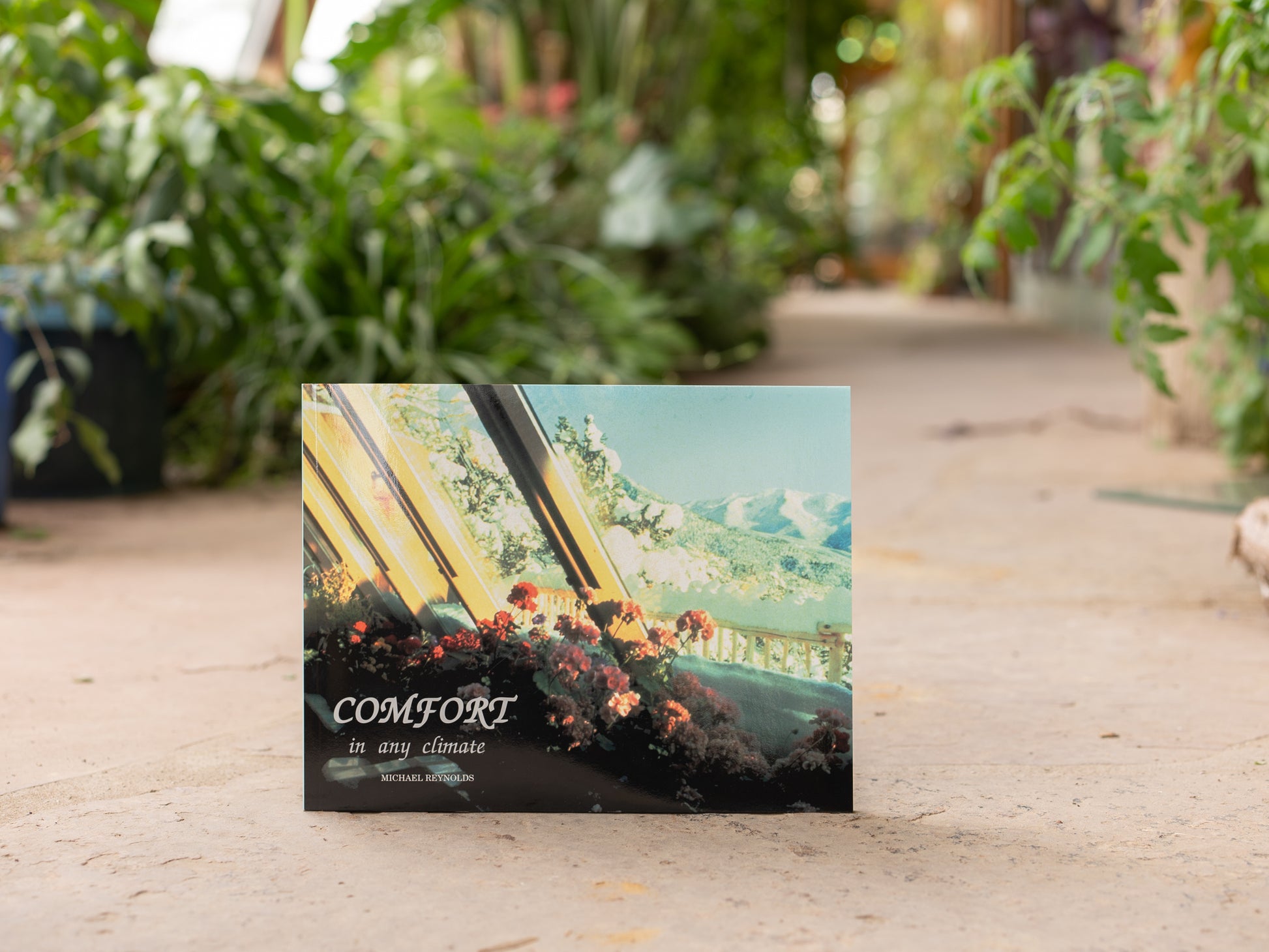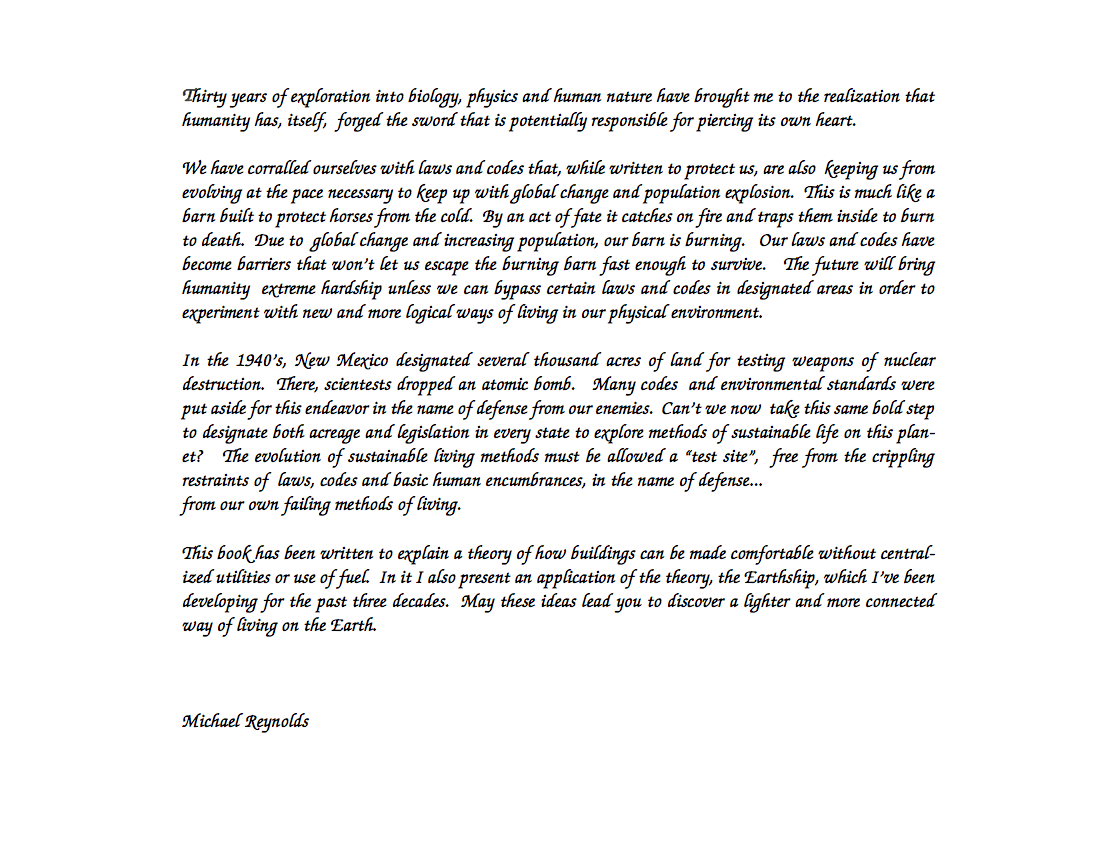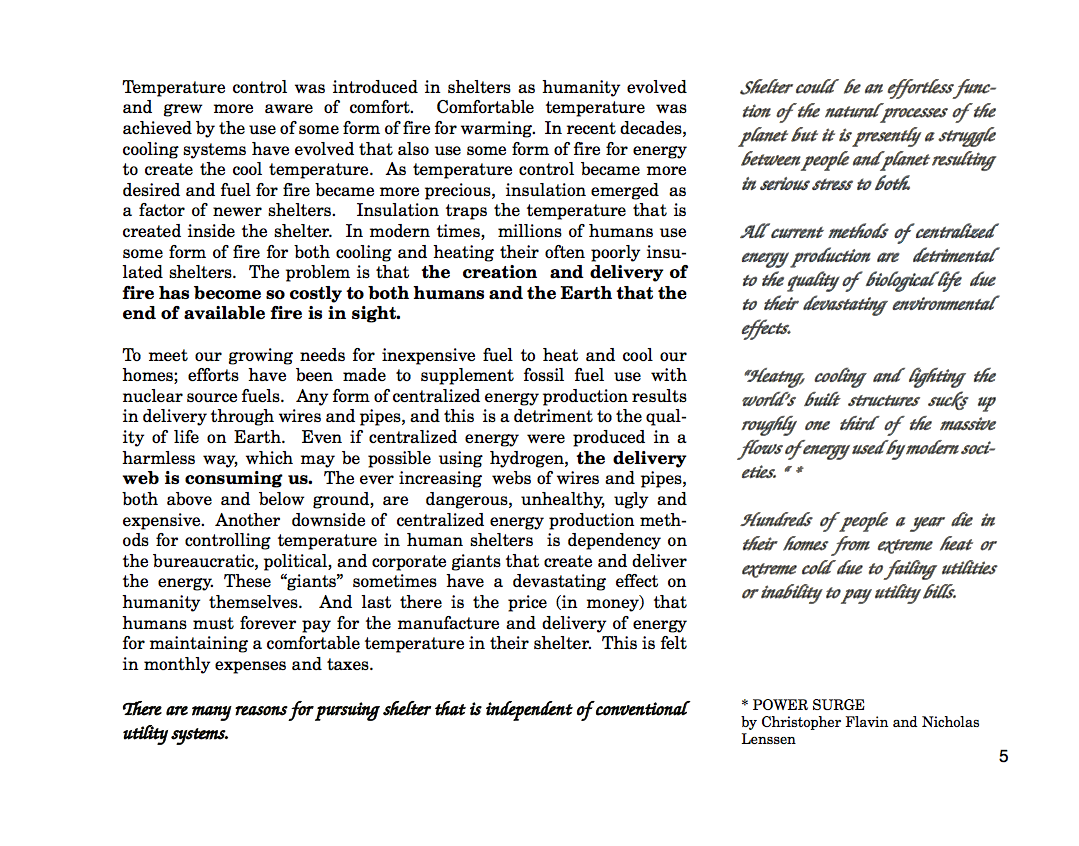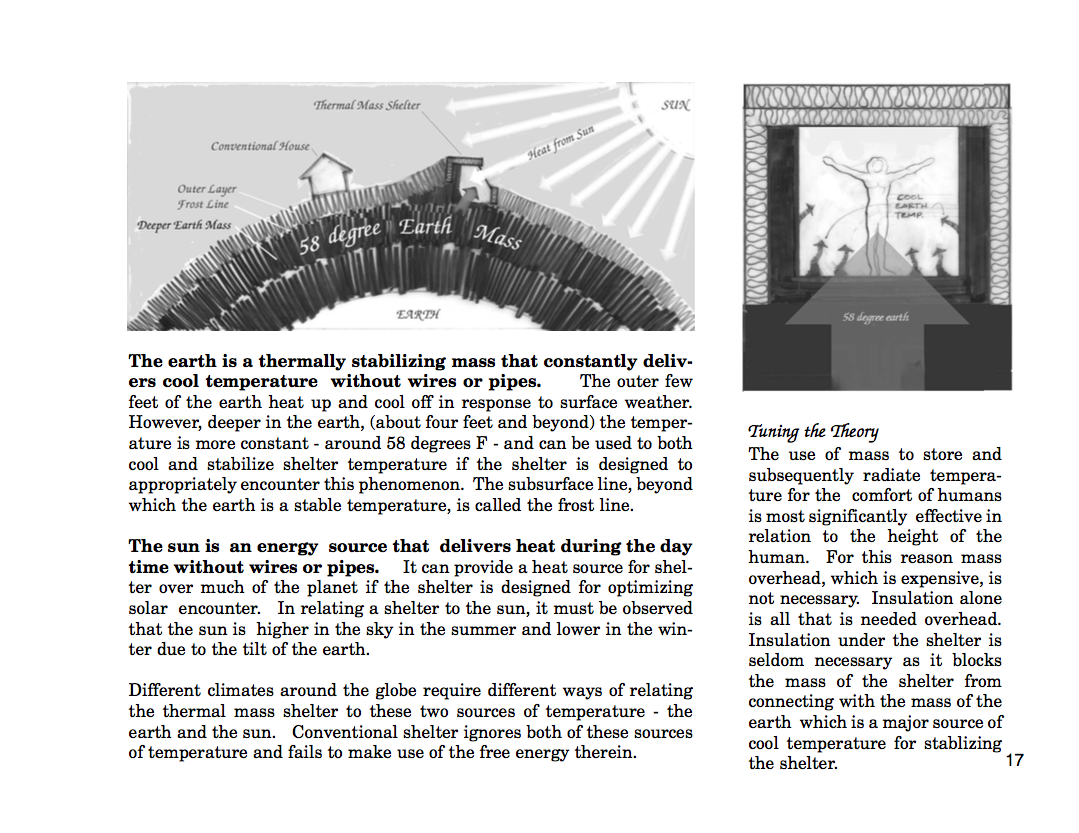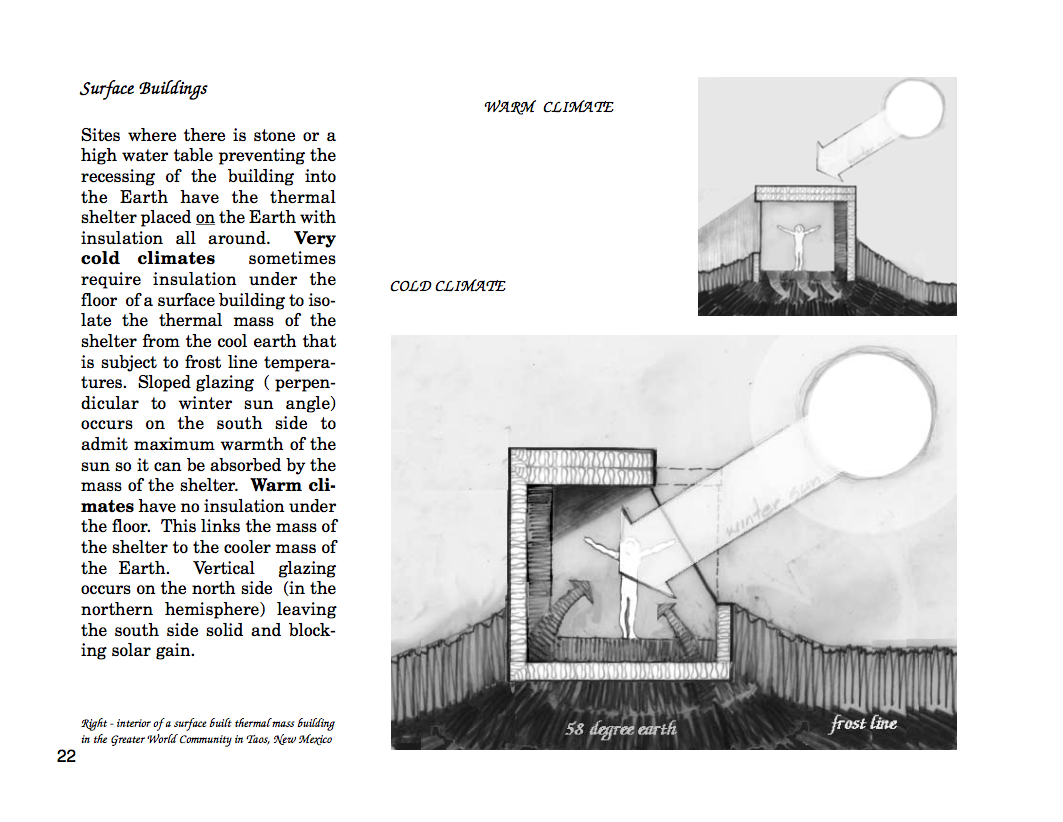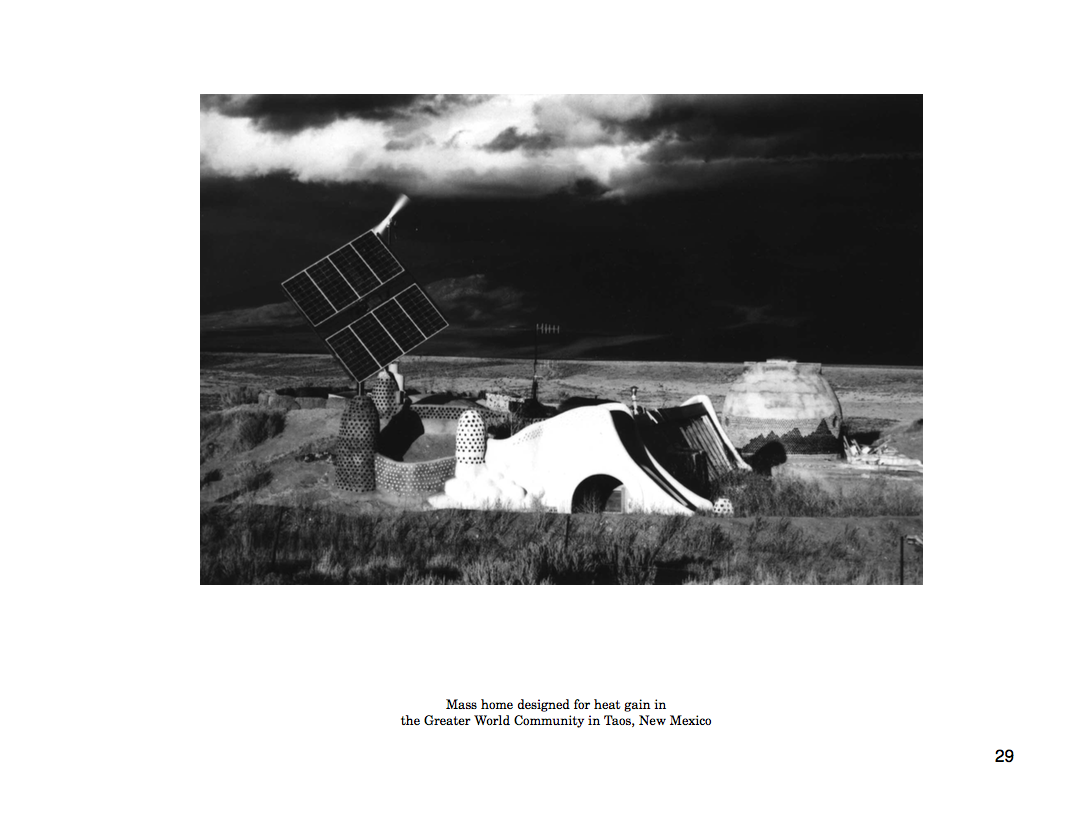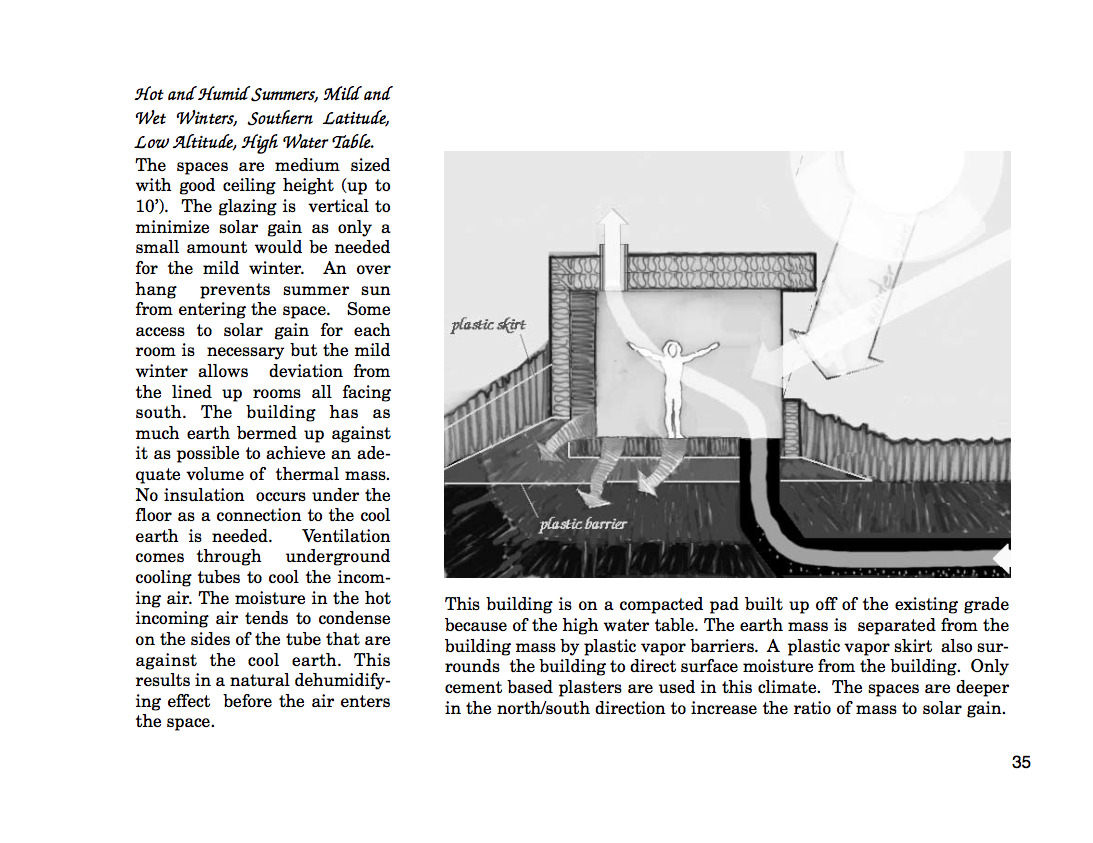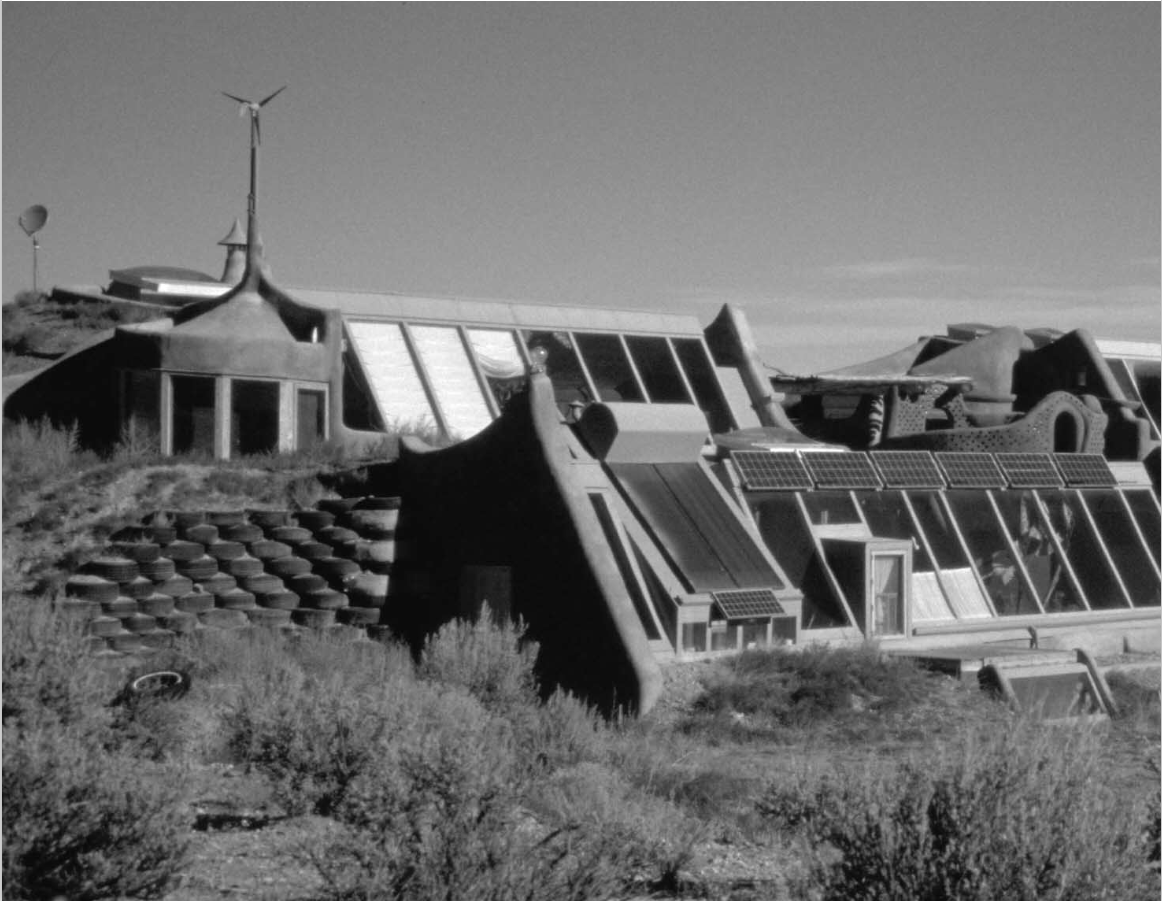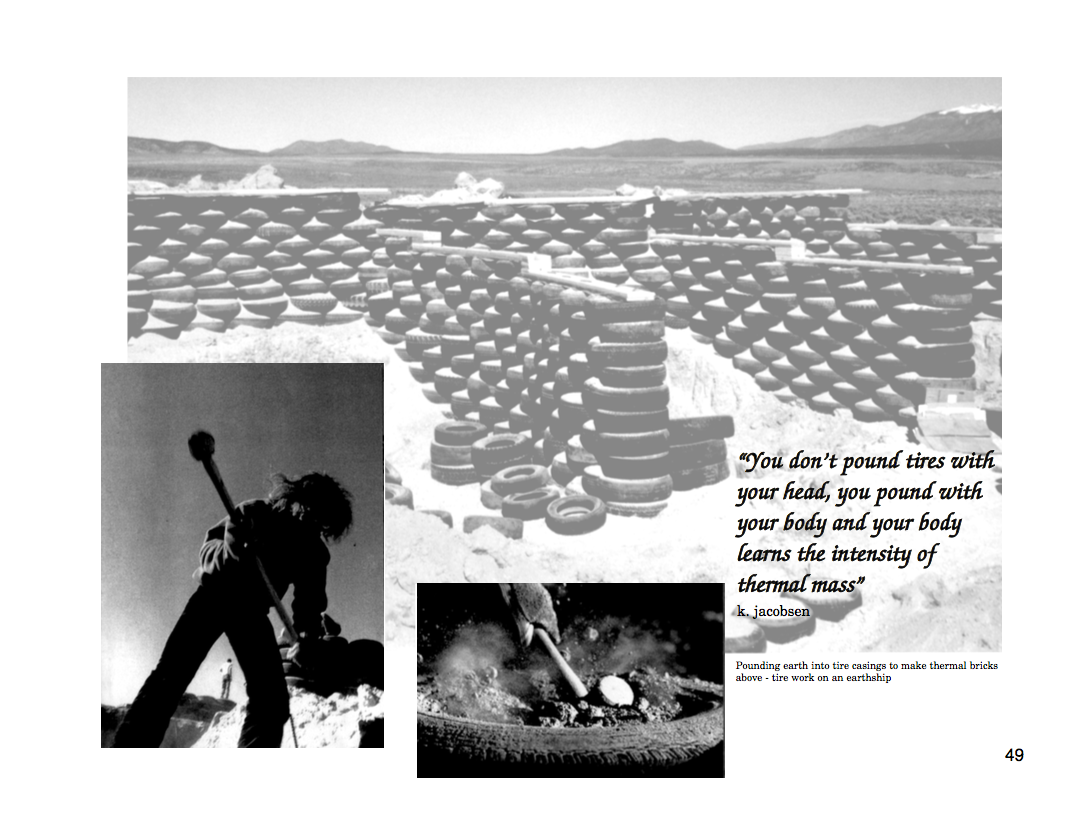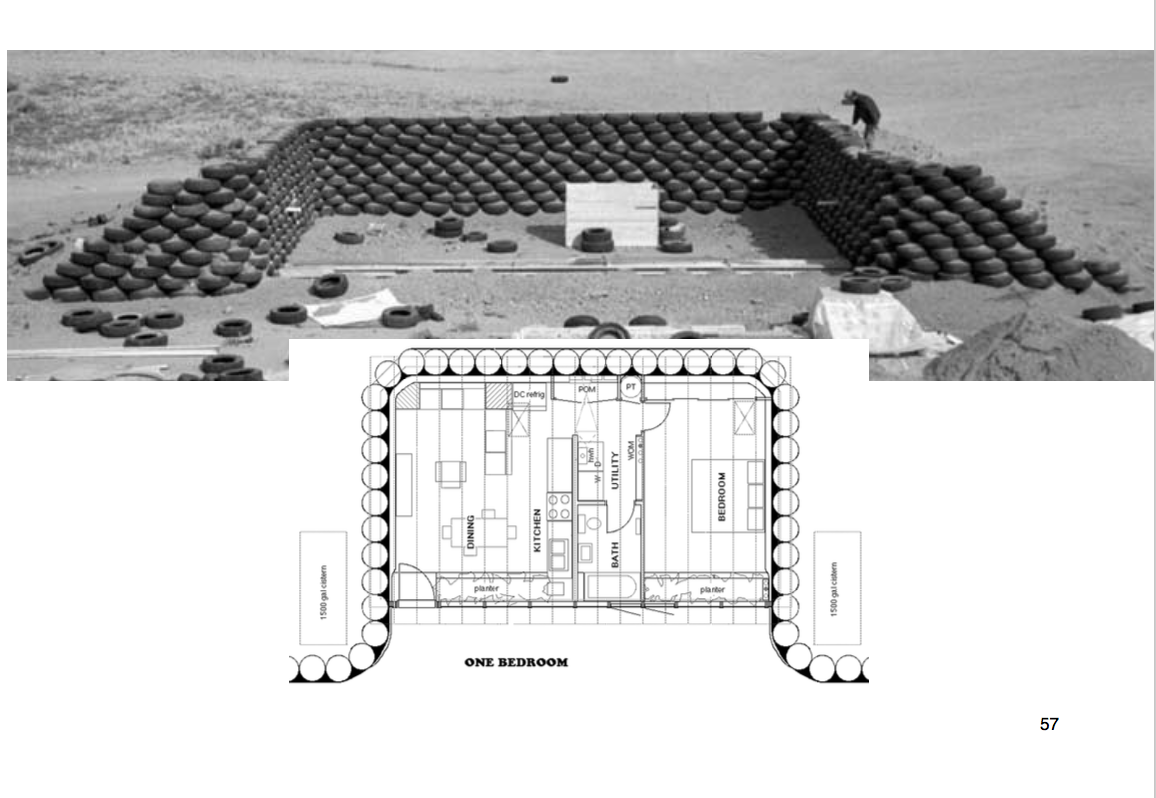Earthship Biotecture
Comfort in Any Climate
Comfort in Any Climate
1680 disponibile/i
Impossibile caricare la disponibilità di ritiro
Comfort in any Climate is a guide to the basics of passive solar design for any climate in a highly pictorial format, giving the reader an overview of the essential principles necessary for high-efficiency homes. This is not a "how-to" book that shows you how to build a house. Rather it is a conceptual book that rapidly conveys the important ideas about how to build a house that requires little or no supplementary heating and cooling. In explaining the basic principles of conductance, convection, and radiance, the three ways heat is transferred to the environment, the author lays the foundation for an in-depth discussion of the principles of passive solar and earth-sheltered construction.
To learn the basic principles of radiant solar energy, observe a dog. In the summer he lies in the shade. In the winter he lies in the sun. As simplistic as this concept seems, it is often ignored in contemporary building design, where the prevalent view is that any issue of comfort can be solved through the use of more electric or fossil fuel energy. Thirty percent of all energy consumed in the United States is used to heat, cool and light our buildings.
Author Michael Reynolds breaks important sustainable design concepts down into clear, easily understood elements: thermal mass, insulation, heating, cooling, and ventilation. He explores in detail the relationship of mass and insulation in keeping a building comfortable. Comfort in Any Climate will help you create a comfortable space in any climate without the need for fossil fuels for heating and cooling. The book describes the difference between thermal mass and insulation, and how to apply these building components to a passive solar design.
Reynolds has been designing and building sustainable buildings around the world for over thirty years. Based on his experience, the author uses architectural diagrams to show how buildings can tap into the temperature of the earth and relate to the angles of the sun. The book presents design variations from extreme cold to extreme heat, and addresses wet and dry climate considerations. The detailed illustrations throughout make it easy for the reader to conceptualize the design processes involved and to discern design differences in various climates and latitudes.
While most of the book is oriented towards passive solar design in general, the last chapter in the book provides an overview specifically of "earthships" as one way of applying passive solar principles. Earthships are high-mass houses with walls made from recycled tires, which are packed full of earth and stacked in a brick-like fashion, before being stuccoed to make appealing interior and exterior walls. Black-and -white illustrations and photos are included throughout the book, with a special color section featuring earthship homes in the back. This is an ideal book for people that are new to either passive solar design or earthships and would like to get a better overview of the basics. Solar Survival Press.
Share
